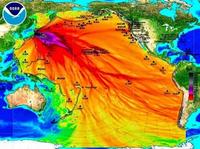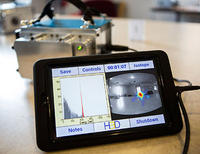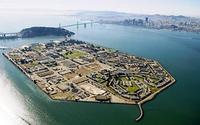-
DOE: Contrary to rumor, there are no evacuation plans for southeastern New Mexico
The Department of Energy (DOE) said the other day that an Internet rumor which has been fueling concerns earlier this week about the need to be prepared to evacuate southeastern New Mexico because of recent events at the Waste Isolation Pilot Plant (WIPP) is “absolutely” without basis. DOE notes that monitoring conducted by Nuclear Waste Partnership of air, soil, water, and vegetation are showing no radiation releases that would approach levels causing health concerns.
-
-
Shale may offer long-term home for nuclear waste
About 77,000 tons of spent nuclear fuel currently sit in temporary above-ground storage facilities, and it will remain dangerous for tens or hundreds of thousands of years or longer. Experts say that since the U.S. government abandoned plans to develop a long-term nuclear-waste storage site at Yucca Mountain in Nevada in 2009, finding new long-term storage sites must be a priority. Shale deep under the Earth’s surface could be a solution. France, Switzerland, and Belgium already have plans to use shale repositories to store nuclear waste long-term.
-
-
Budget proposal cuts funds for nuclear nonproliferation programs
The White House’s fiscal 2015 budget proposal includes more than $220 million in cuts for nuclear security initiatives such as the International Material Protection and Cooperationprogram, which aims to secure and eliminate vulnerable nuclear weapons and materials, and the Global Threat Reduction Initiative, which supports the Energy Department’s efforts to prevent terrorists from acquiring nuclear and radiological materials that could be used in weapons of mass destruction. The administration says that 54 percent of the reduction in the administration’s nonproliferation budget request can be accounted for by the decision to halt the South Carolina Mixed Oxide Fuel Fabrication Facility(MOX), which would have convert weapons-grade plutonium into nuclear reactor fuel, because the project proved to be too costly.
-
-
S.C. politicians want decision to halt work on Savannah River plutonium plant reversed
Three Republican lawmakers from South Carolina — Senator Lindsey Graham and Representatives Tim Scott and Joe Wilson have – have asked South Carolina governor Nikki Haley to “explore any legal avenues” to prevent the mixed-oxide fuel (MOX) project at the Savannah River Sitefrom shutting down. The administration has decided to put the project on hold after repeated delays and cost overruns averaging 60 percent over the original estimates.
-
-
Loa Alamos lab has nowhere to send its nuclear waste
With the U.S. only underground nuclear waste repository shut down owing to radiation leaks, Los Alamos National Laboratory found itself facing a problem: it has to find an alternative place to ship toxic waste from a mesa on its northern New Mexico campus, and it has until June to do so. The problem is shared by other sites with nuclear waste. The fact that the repository has been shut down indefinitely means that soon nuclear waste will begin to backup ate various locations around the country where nuclear weapons-related activity is taking place.
-
-
Radiation from Fukushima to reach West Coast in April

On the third anniversary of the Fukushima nuclear plant incident, scientists are reporting that low levels of radiation from the Fukushima plant will reach ocean waters along the U.S. West Coast by April 2014. The scientists say that the radiation will be at levels too low to harm humans, but they call for more monitoring, including at the federal level.
-
-
Innovative nuclear radiation detector reaches the market

A handheld radiation camera developed by University of Michigan engineering researchers offers nuclear plant operators a faster way to find potentially dangerous hot spots and leaky fuel rods. The new Polaris-H detector lays a gamma-ray map over an image of a room, pinpointing radiation sources with unprecedented precision. At least four U.S. nuclear power plants are using versions of the camera, which is now available commercially through the U-M spinoff company H3D.
-
-
Underground recovery process at WIPP begins
Nuclear Waste Partnership (NWP), the management and operations contractor at the Waste Isolation Pilot Plant (WIPP) for the U.S. Department of Energy (DOE), said it has initiated the first phase of an underground recovery process which will lead to the resumption of nuclear waste disposal operations at WIPP. Initial results show no airborne radioactive contamination in the underground shafts.
-
-
Scotland demands U.K. govt. apology over radiation leak at MoD nuke facility
In 2012 the U.K. Ministry of Defense decided to refuel the nuclear reactor on board Britain’s oldest nuclear submarine, HMS Vanguard, after a test reactor operating at the Naval Reactor Test Establishment at Dounreay, Caithness, in Scotland was found to have a small internal leak of radiation. The test reactor had been shut down after the fault was detected, and both the independent Defense Nuclear Safety Regulator and the Scottish Environment Protection Agency (SEPA) had been informed. It now appears that SEPA did not share the information with the Scottish cabinet, or with Alex Salmond, the First Minister of Scotland. Salmond, in a scathing letter to British Prime Minister David Cameron, has demanded an apology from Camron for “disrespecting” the Scottish Parliament and the people of Scotland and for treating both in an “underhanded” manner by not sharing the information about the radiation leaks.
-
-
Nuclear waste kept in parking area as N.M. repository remains closed
The federal government’s only underground nuclear waste dump, the Waste Isolation Pilot Plant (WIPP) in New Mexico, remains closed and state environmental officials have set deadlines for the Department of Energy and its contractor-operator of the site to deal with radioactive waste left above ground at the repository. Dozens of drums and containers which have been shipped from federal facilities around the country are being stored in a parking area at the plant, and inside the plant’s waste- handling building.
-
-
Radiation problems on San Francisco’s Treasure Island persist

The Army Corps of Engineers created San Francisco’s Treasure Island for the 1939 Golden Gate International Exposition, with plans to turn the island into a civilian airport after the exposition. When the United States entered the Second World War in 1941, the Navy used the island for the Treasure Island Naval Station, where nuclear war training exercises were conducted. The Naval Station was decommissioned in 1993, and parts of the island were transferred to SF for civilian use. Radiation levels on the island are still high, however, and critics charge that the Navy did not do enough to clean the island while downplaying the risks of radiation that still remain.
-
-
Virtual lab for nuclear waste repository research
A nuclear waste repository must seal in radioactive waste safely for one million years. Researchers currently have to study repositories and their processes in real underground laboratories, but a virtual underground laboratory will soon simplify their work.
-
-
Energy Department suspends work on controversial plutonium reprocessing project

The Obama administration has decided to put on hold its plans to complete construction on a South Carolina reprocessing facility which would convert nuclear weapon-grade plutonium into reactor fuel. The suspension of work on the project is part of the fiscal 2015 budget plan the administration unveiled Tuesday. The project has been hobbled by delays and massive cost-overruns, and experts says security and safety concerns have not been adequately addressed.
-
-
Proposed 2015 budget cuts funding for nuclear nonproliferation programs
The Obama administration 2015 budget proposal shows that the administration will spend less on nuclear nonproliferation initiatives in 2015 than it would in 2014. The budget of the National Nuclear Security Administration (NNSA), the agency responsible for various nuclear weapons and nuclear nonproliferation programs, will be cut by 20 percent, from the $1.9 billon Congress approved for fiscal 2014 — which in turn was a $289 million cut from fiscal 2013 levels — to $1.6 billion in 2015.
-
-
Employees exposed to radiation at nuclear waste disposal site
Thirteen employees at the Waste Isolation Pilot Plant(WIPP),a nuclear waste burial site in New Mexico, have been exposed to radioactive radiation after a leak in one of WIPP’s underground tunnels. Energy Department officials say it is too soon to determine the scope of health risks the employees will deal with. The employees inhaled plutonium and americium, both of which can irradiate the body’s internal organs with subatomic particles for a lifetime.
-
- All
- Regional
- Water
- Biometrics
- Borders/Immig
- Business
- Cybersecurity
- Detection
- Disasters
- Government
- Infrastructure
- International
- Public health
- Public Safety
- Communication interoperabillity
- Emergency services
- Emergency medical services
- Fire
- First response
- IEDs
- Law Enforcement
- Law Enforcement Technology
- Military technology
- Nonlethal weapons
- Nuclear weapons
- Personal protection equipment
- Police
- Notification /alert systems
- Situational awareness
- Weapons systems
- Sci-Tech
- Sector Reports
- Surveillance
- Transportation
Advertising & Marketing: advertise@newswirepubs.com
Editorial: editor@newswirepubs.com
General: info@newswirepubs.com
2010-2011 © News Wire Publications, LLC News Wire Publications, LLC
220 Old Country Road | Suite 200 | Mineola | New York | 11501
Permissions and Policies
Editorial: editor@newswirepubs.com
General: info@newswirepubs.com
2010-2011 © News Wire Publications, LLC News Wire Publications, LLC
220 Old Country Road | Suite 200 | Mineola | New York | 11501
Permissions and Policies
